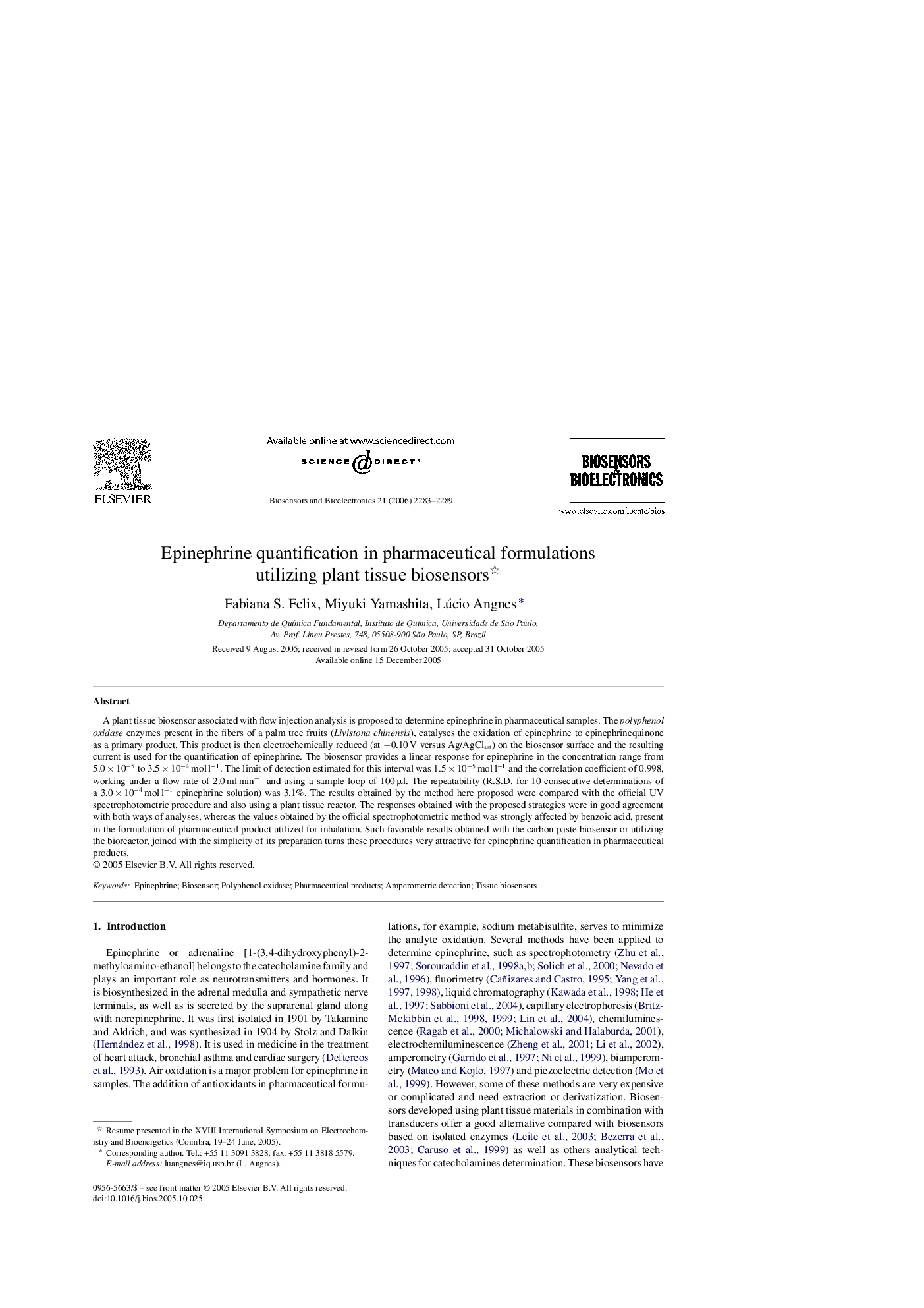| Article ID | Journal | Published Year | Pages | File Type |
|---|---|---|---|---|
| 870154 | Biosensors and Bioelectronics | 2006 | 7 Pages |
A plant tissue biosensor associated with flow injection analysis is proposed to determine epinephrine in pharmaceutical samples. The polyphenol oxidase enzymes present in the fibers of a palm tree fruits (Livistona chinensis), catalyses the oxidation of epinephrine to epinephrinequinone as a primary product. This product is then electrochemically reduced (at −0.10 V versus Ag/AgClsat) on the biosensor surface and the resulting current is used for the quantification of epinephrine. The biosensor provides a linear response for epinephrine in the concentration range from 5.0 × 10−5 to 3.5 × 10−4 mol l−1. The limit of detection estimated for this interval was 1.5 × 10−5 mol l−1 and the correlation coefficient of 0.998, working under a flow rate of 2.0 ml min−1 and using a sample loop of 100 μl. The repeatability (R.S.D. for 10 consecutive determinations of a 3.0 × 10−4 mol l−1 epinephrine solution) was 3.1%. The results obtained by the method here proposed were compared with the official UV spectrophotometric procedure and also using a plant tissue reactor. The responses obtained with the proposed strategies were in good agreement with both ways of analyses, whereas the values obtained by the official spectrophotometric method was strongly affected by benzoic acid, present in the formulation of pharmaceutical product utilized for inhalation. Such favorable results obtained with the carbon paste biosensor or utilizing the bioreactor, joined with the simplicity of its preparation turns these procedures very attractive for epinephrine quantification in pharmaceutical products.
